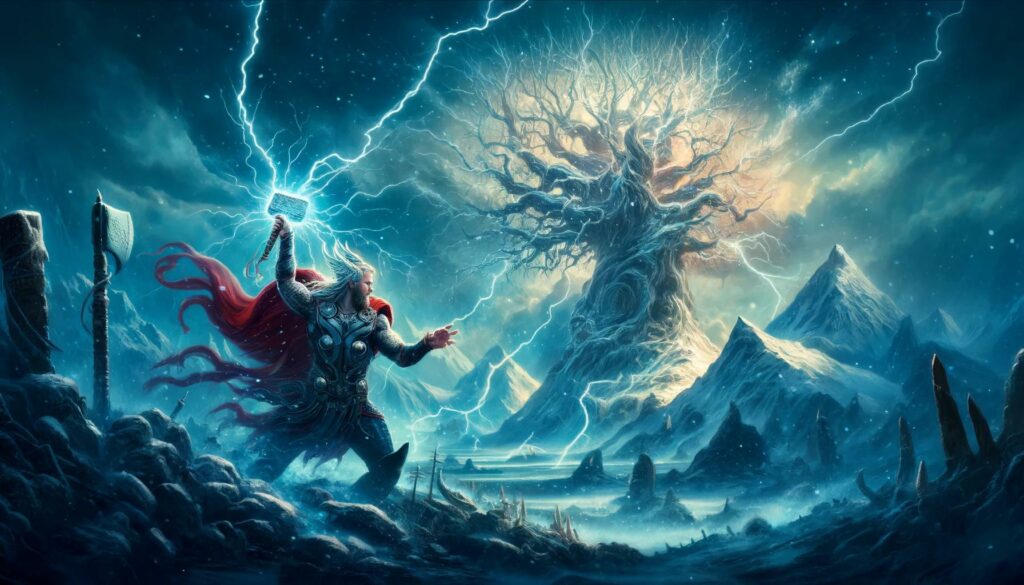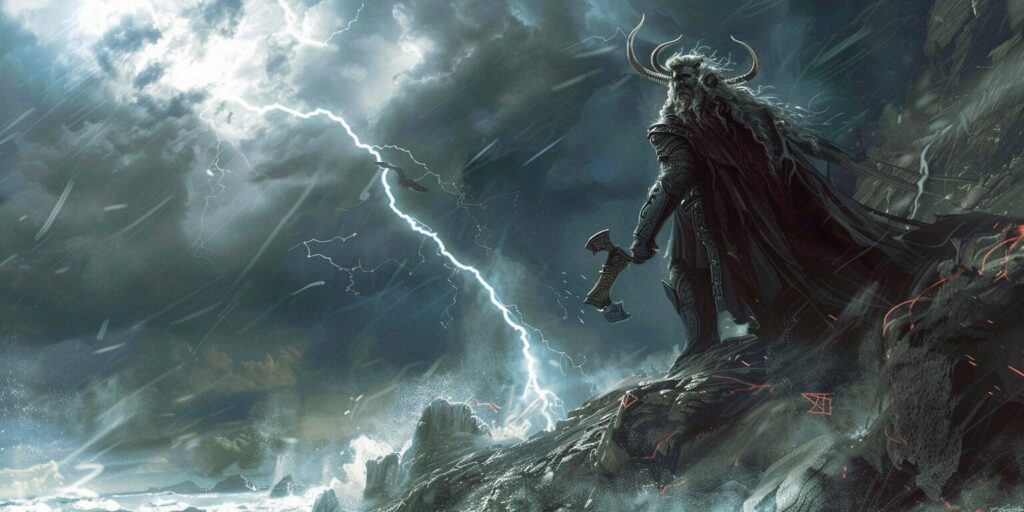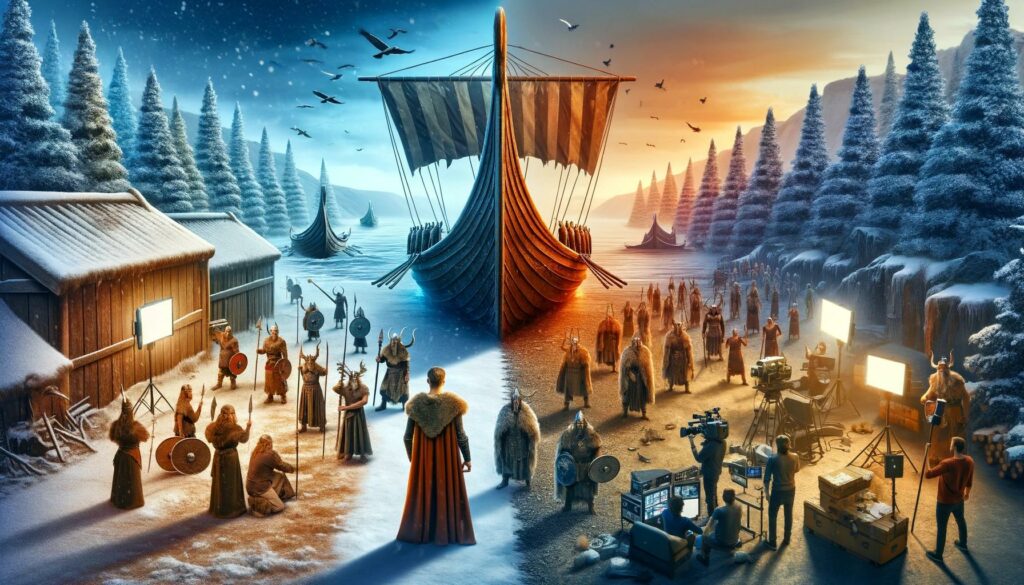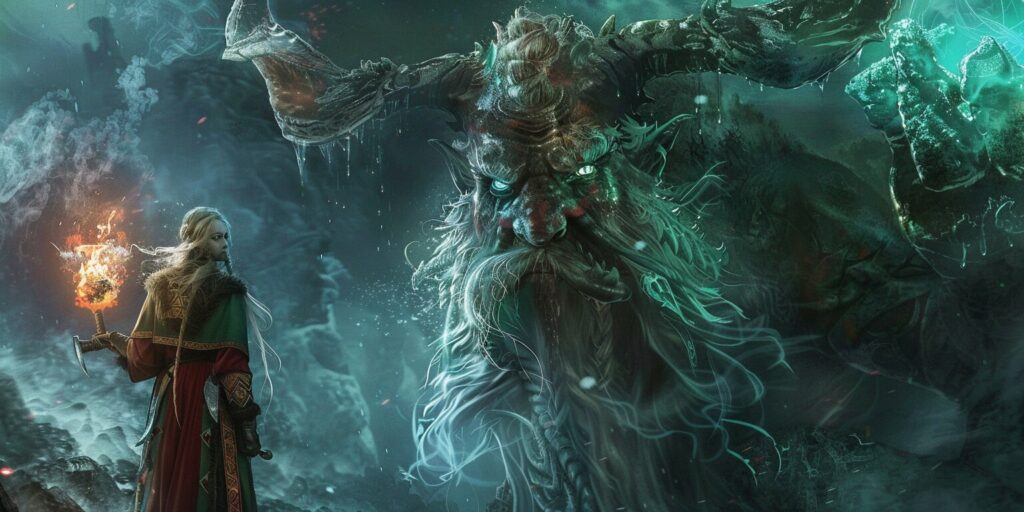Aesir Goddesses, Aesir Gods, Freya, Loki, Norse Ancestry, Norse Goddesses, Norse Gods, Norse Mythology, Odin, Tales of the Gods, Thor
Why Norse Mythology Captivates Us Today
Norse mythology continues to captivate people today due to its unique and intriguing elements, making it a popular topic in modern culture. The tales of gods, giants, and heroes from Norse mythology have a timeless appeal that resonates with audiences of all ages. Additionally, the influence of Norse mythology on popular culture, the integration of its themes into contemporary society, and the rich history and origins of these myths add to their captivating nature.
If you have ever wondered what makes Norse mythology unique, keep reading this article to explore this interesting topic.
What Makes Norse Mythology So Popular in Modern Times?
Norse mythology has captured the imagination of people across the world and continues to be a topic of fascination in modern times, as seen in the works of Tolkien and the storytelling framework of Marvel Comics. This ancient mythological tradition holds a unique place in popular culture, influencing various forms of entertainment and leaving its mark on contemporary society, from Wagner’s operas to the impactful narratives of Marvel Comics and the epic stories of Ragnarok.
The Influence of Norse Mythology on Popular Culture
How does Norse mythology affect us today? Well, the enduring appeal of Norse mythology can be seen in its significant influence on popular culture. From literature and films to television shows and video games, Norse mythological elements have become integral parts of these mediums, captivating audiences with their epic stories and iconic characters. The gods and monsters of Norse mythology, such as Thor, Odin, Loki, giants, and dwarves, have become beloved figures in modern storytelling, adding depth and excitement to narratives in Marvel comics and beyond.
Norse Mythology in Place Names
One unique aspect that makes Norse mythology so intriguing is its presence in place names. Particularly in Scandinavian countries, many locations, streets, and landmarks are named after gods, heroes, and creatures from Norse mythology. These place names serve as a reminder of the lasting impact of these ancient tales and the reverence with which they are held in contemporary society.
Exploring the Intriguing Gods and Monsters in Norse Mythology
The gods and monsters of Norse mythology are renowned for their complex and dynamic personalities. Deities like Thor, Odin, and Loki, with their distinct traits and roles, have captured the imaginations of people around the world, including through their portrayals in Marvel Comics and adaptations inspired by Tolkien. Alongside Norse gods, creatures like giants and dwarves add a touch of mystery and wonder to the Norse mythological world, enriching narratives from Marvel comics to Wagner’s operas. Their fascinating characteristics and the captivating stories that surround them contribute to the enduring popularity of Norse mythology.

How has Norse Mythology Been Integrated into Contemporary Society?
One of the reasons Norse mythology continues to captivate us today is its profound integration into contemporary society. Its influence can be seen in various aspects of modern culture, from literature and films to everyday life references. Let’s explore how Norse mythology has left its mark on the world around us.
Norse Mythology in Modern Literature and Films
Norse mythology has found a prominent place in modern literature and films, captivating audiences with its epic tales and iconic characters. Acclaimed authors like Neil Gaiman and Joanne Harris have drawn inspiration from Norse myths, incorporating them into their works and introducing readers to the enchanting world of gods, giants, and heroes. Similarly, films and TV shows, such as Marvel’s Thor franchise, have brought Norse mythological elements to the big screen, reaching a wider audience and sparking their interest in this ancient mythology.
The Resurgence of Interest in the Norse Pantheon
In recent years, there has been a resurgence of interest in the Norse pantheon, with people exploring and studying the roles and significance of these deities in ancient Norse religion. This renewed fascination has led to a deeper appreciation and understanding of Norse mythology’s impact on history and culture. The complex and dynamic personalities of gods like Thor, Odin, and Loki and the captivating stories surrounding them continue to captivate individuals, fueling the research and exploration of the Norse pantheon.
Norse Mythology References in Everyday Life
The influence of Norse mythology extends beyond literature and films; it permeates various aspects of everyday life. Norse mythology references can be found in the names of popular brands, products, and services. For example, the car manufacturer Volvo takes its name from the Latin word for “I roll,” which is derived from the Norse word “vǫlva,” meaning “a seeress.” Additionally, our solar system’s celestial bodies, like planets and moons, are often named after Norse mythological figures like Thor, Odin, and Freya. These everyday references serve as subtle reminders of the enduring relevance and impact of Norse mythology on contemporary society, from linguistics to brand names inspired by the old Norse and Icelandic traditions.
Exploring the Rich History and Origins of Norse Mythology
The rich history and origins of Norse mythology can be traced back to the ancient Germanic and Scandinavian cultures. These myths and legends evolved over time through oral traditions and retelling and were later recorded in texts like the Poetic Edda and Prose Edda.
The Evolution of Norse Myths and Legends
Norse mythology has a long and intricate history, shaped by the beliefs and experiences of the ancient Germanic and Scandinavian peoples. The stories evolved through generations, with each retelling adding new layers and nuances to the myths and legends.
The Poetic Edda and Prose Edda, written in the 13th century, are important sources for understanding Norse mythology. These texts preserved ancient tales chronicling the adventures of gods, heroes, and mythical creatures.
Throughout the centuries, Norse myths and legends have withstood the test of time, captivating successive generations with their timeless themes of heroism, sacrifice, and the eternal struggle between gods and giants.

The Significance of Norse Mythology in Viking Culture
Norse mythology held significant importance in Viking culture, permeating every aspect of their lives. The gods and stories from Norse mythology played a pivotal role in their beliefs, rituals, and social structure.
The Norse pantheon, led by Odin, Thor, and Loki, provided a framework for understanding the world and the Vikings’ place within it. These gods represented various forces of nature and human qualities, guiding the Vikings’ actions and shaping their worldview.
Viking society was deeply intertwined with Norse mythology, with traditions and beliefs rooted in Sweden and Iceland’s old Norse language and culture. Religious rituals, including sacrifices and feasts, were conducted to honor the gods and gain their favor. The sagas and poems recited during gatherings celebrated the heroic exploits of legendary figures, inspiring the Vikings to embody the virtues and bravery of their mythical ancestors, a theme explored in Wagner’s operas and Tolkien’s literature.
Norse Mythology’s Impact on Scandinavian Societies
Norse mythology profoundly impacted Scandinavian societies, extending beyond religious practices. The myths and symbols of Norse mythology are deeply rooted in the cultural identity of these regions. So, is Norse mythology still practiced?
Even today, festivals and celebrations honor the gods and preserve their traditions. In Scandinavia, Midsummer’s Eve, known as “Midsommar,” pays homage to the ancient Norse goddess Freyja, symbolizing fertility and the bountiful harvest.
Norse mythological themes can be found throughout Scandinavian art, literature, and architecture. The intricate wood carvings on Viking ships, the symbols etched into rune stones, and the iconic imagery of Valhalla and Yggdrasil testify to the enduring influence of Norse mythology on Scandinavian societies.
Norse Mythology and Its Comparisons with Other Mythological Systems
Comparisons between Norse mythology and other mythological systems provide fascinating insights into these ancient belief systems’ cultural and historical contexts.
While Norse mythology shares certain similarities with other mythologies, such as Greek mythology or Celtic mythology, it also possesses unique characteristics and themes explored in Wagner’s operas and Tolkien’s works.
One notable contrast is the emphasis on fate and the transient nature of life in Norse mythology, as opposed to the concept of eternal reward or punishment found in some other mythological systems.
Studying these comparisons helps illuminate the diverse ways in which human societies have interpreted and represented the mysteries of existence throughout history.
How Norse Mythology Continues to Influence Modern Media and Entertainment
Norse mythology’s enduring presence in modern media and entertainment is a testament to its rich cultural heritage and timeless appeal. From contemporary art and pop culture to literature and role-playing games, Norse mythological elements continue to captivate audiences and inspire creatives across various platforms.
The Revival of Norse Mythology in Contemporary Art and Pop Culture
Norse mythology has experienced a resurgence in contemporary art and pop culture, with artists and designers drawing inspiration from its themes and symbols. Paintings, sculptures, and other artistic creations often feature Norse mythological figures like Thor, Odin, and Freya, showcasing their iconic status and mythical allure.
From gallery exhibitions to street murals, the influence of Norse mythology in contemporary art is evident in its ability to evoke a sense of wonder and connect with audiences on a deeper level.
Norse Mythology’s Presence in Literature and Modern Entertainment
The impact of Norse mythology reaches far and wide in the realm of literature and modern entertainment. Authors and filmmakers continue exploring Norse myth’s rich narratives and characters, creating compelling stories that resonate with readers and viewers. The legacy of old Norse and the imaginative world of Tolkien shapes these stories.

Neil Gaiman’s “American Gods” is a prime example of how Norse mythology has been seamlessly woven into modern literature, blending ancient tales with contemporary themes and settings. Similarly, the Marvel cinematic universe’s depiction of Thor has introduced Norse mythology to a global audience, solidifying its place in modern entertainment.
Exploring Norse Mythological Elements in Popular Role-Playing Games
Norse mythological elements have found a natural home in popular role-playing games, allowing players to immerse themselves in the world of ancient Norse legends, including sagas influenced by old Norse and Icelandic literature. Games like “God of War” and “Assassin’s Creed Valhalla” incorporate Norse mythology into their storytelling and gameplay, offering players the opportunity to engage with epic quests, mythical creatures, and the iconic gods and heroes of Norse mythology.
The integration of Norse mythological elements in role-playing games provides entertainment and a gateway for players to learn and appreciate the rich lore and cultural significance surrounding Norse mythology.
Overall, the enduring influence of Norse mythology in modern media and entertainment highlights its timeless appeal and ongoing relevance in contemporary society. Whether in art, literature, or gaming, Norse mythological elements continue to capture our imaginations and deepen our appreciation for this ancient and captivating mythology.
Bottom Line
Norse mythology’s enduring popularity and captivating stories have profoundly impacted modern culture, including adaptations by Marvel Comics and references to Ragnarok in contemporary movies. The gods, giants, and heroes of Norse mythology continue to captivate audiences worldwide, drawing them into a rich world of myths and legends. These immortal tales have been retold and celebrated in various forms of media and entertainment, ensuring their enduring appeal.
From ancient times to the present day, Norse mythology has fascinated people with its epic narratives and iconic characters. The gods, such as Thor and Odin, are symbols of power and strength, while the giants and heroes represent both the wonders and challenges of life. Their stories resonate with individuals of all backgrounds and ages, making Norse mythology a universal source of inspiration and fascination, including its adaptation by Tolkien and its reflection in modern Nordic societies.
Furthermore, the rich history and origins of Norse mythology add depth to its enduring legacy, significantly influencing Nordic culture and the portrayal of Norse mythology in popular culture. Rooted in ancient Germanic and Scandinavian cultures, these myths have evolved over time through oral traditions and later recorded in texts. The tales of gods, giants, and heroes have shaped ancient societies and left a lasting impact on modern Scandinavian cultures, with festivals and celebrations honoring these ancient traditions.
Whether through literature, films, art, or games, Norse mythology continues to influence popular culture. Its striking imagery, vivid characters, and timeless themes make it a wellspring of inspiration for creators around the world. As long as people seek captivating stories, the gods and creatures of Norse mythology will endure, ensuring that their stories will be told for generations to come.

